The California Community Foundation pledged $1-billion to Los Angeles County non-profits today during a special town hall meeting at the St. Sophia Cathedral in Mid-City. An estimated 400 civic leaders, including L.A. Mayor Eric Garcetti and County Supervisor Mark Ridley-Thomas were among the attendees.
The town hall meeting and funding announcement was part of a celebration of CCF‘s 100th anniversary.
The money will be disbursed over a ten year period and will be paid out in the form of grants, loans and scholarships. Which non-profits will get funds and how much they will get are unknown.
Jonathan Zeichner, Executive Director of the South L.A.-based A Place to Call Home, said that communication between groups like his and the Foundation is key.
“We’re on the ground representing the constituents that we serve,” he said. “[It’s] really important that it’s a two way dialogue.”
CCF President, Antonia Hernandez said she hopes to focus on low income housing, community clinics, and early childhood education. Groups trying to get a cut of the funds will have their application reviewed by the CCF staff and its 20 member board.
“We’re [non-profits] required to show what we will do with the funds,” said Zeichner. “And if we’re doing we we say we are…that’s the basis to continue the funding.”
Representatives from all of the County’s 88 cities were in attendance, signaling the importance of the funds to public officials who are grappling with increases in crime and homelessness in many of their communities. Their combined attendance was also a sign of unity among the county’s various municipalities.
Since 2013 homelessness has risen by 12% across L.A. County, a fact that many attribute to the area’s tight housing supply. A report from the LA Homeless Services Authority released earlier this year had the number of homeless people in the county at more than 40,000.
The problem has gotten so bad that this past month the L.A. City Council declared a “state of emergency” over the issue and dedicated $100 million towards homeless services like shelters and housing vouchers.
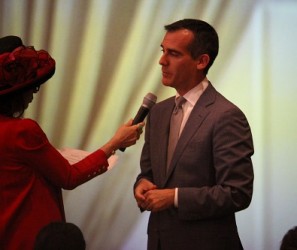
Mayor Eric Garcetti at California Community Foundation Town Hall on October 8, 2015 | Photo by Kevin Walker
Mayor Garcetti, speaking at today’s event, referenced the challenges facing the county but stressed the need for civic pride.
“We’re good at privately saying what we love about L.A., but publicly bitching about what we don’t,” Garcetti said. “We need to invert that.









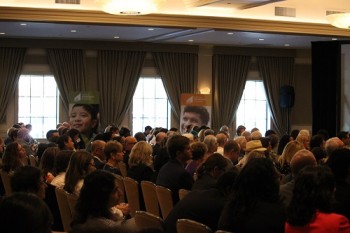
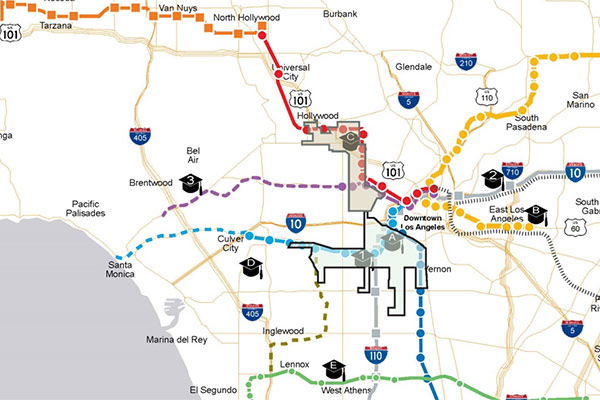

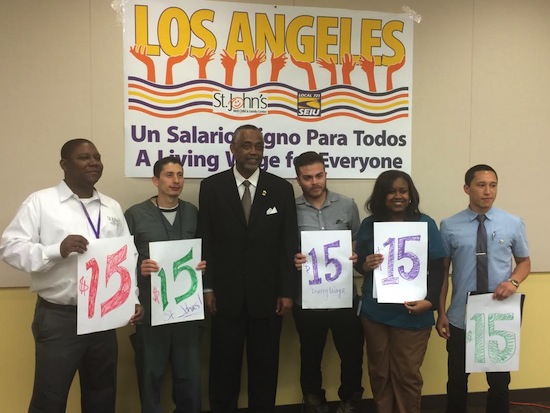

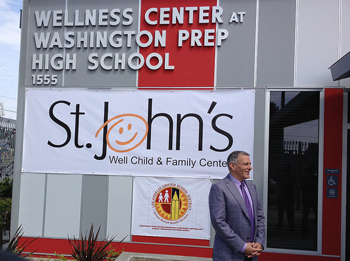 St. John’s Well Child & Family Center CEO Jim Mangia.
St. John’s Well Child & Family Center CEO Jim Mangia. 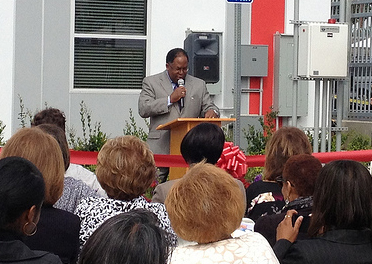 L.A. County Supervisor Mark Ridley-Thomas at the opening of St. John’s Well Child & Family Center clinic at Washington Prep High School.
L.A. County Supervisor Mark Ridley-Thomas at the opening of St. John’s Well Child & Family Center clinic at Washington Prep High School. 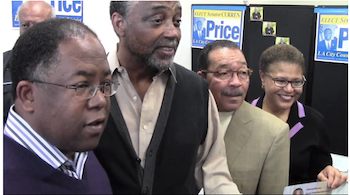 Curren Price, second from the left, with County Supervisor Mark Ridley-Thomas, City Council President Herb Wesson and Los Angeles Congresswoman Karen Bass.
Curren Price, second from the left, with County Supervisor Mark Ridley-Thomas, City Council President Herb Wesson and Los Angeles Congresswoman Karen Bass.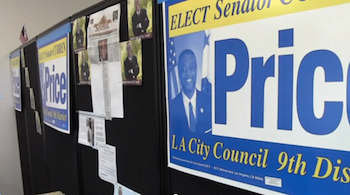 Photos from Curren Price headquarters.
Photos from Curren Price headquarters. 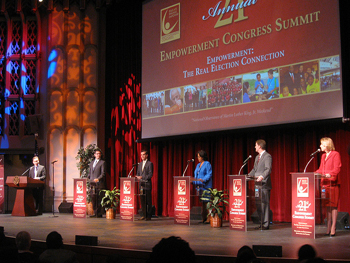 Mayoral candidates Emanuel Pleitez, Eric Garcetti, Jan Perry, Kevin James and Wendy Greuel answer questions at Empowerment Congress forum.
Mayoral candidates Emanuel Pleitez, Eric Garcetti, Jan Perry, Kevin James and Wendy Greuel answer questions at Empowerment Congress forum. 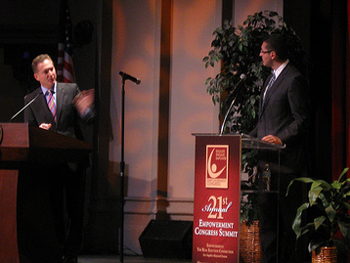 Mayoral candidate Emanuel Pleitez, right, answers a question from the moderator at the Empowerment Congress debate.
Mayoral candidate Emanuel Pleitez, right, answers a question from the moderator at the Empowerment Congress debate. 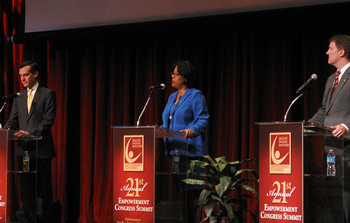 Mayoral candidate Jan Perry, center, answers a moderator’s question.
Mayoral candidate Jan Perry, center, answers a moderator’s question.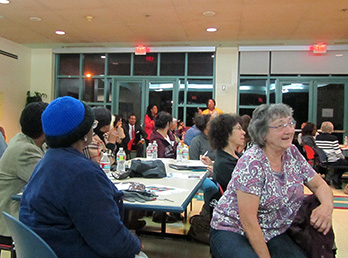


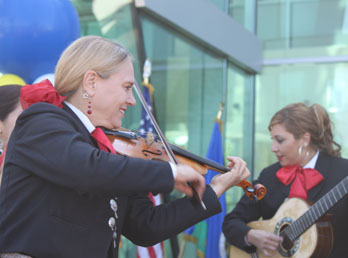 Members of the group Mariachis Ellas Son provided music and a festive spirit to the grand opening of the new Martin Luther King, Jr. Center for Public Health.
Members of the group Mariachis Ellas Son provided music and a festive spirit to the grand opening of the new Martin Luther King, Jr. Center for Public Health.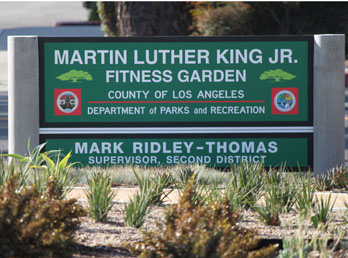 The public health center also puts an emphasis on healthy living and prevention of chronic diseases like obesity and diabetes.
The public health center also puts an emphasis on healthy living and prevention of chronic diseases like obesity and diabetes. 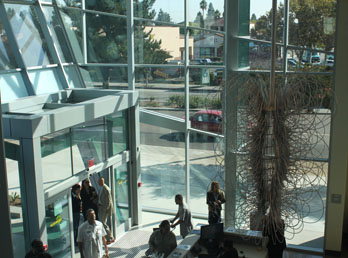 The lobby of the building is filled with natural light and original artwork by Cliff Garten. Waiting rooms are clean and feature bright colors. A computer in every exam room will help keep digital records on all the 17,000 patients the center expects to serve this year.
The lobby of the building is filled with natural light and original artwork by Cliff Garten. Waiting rooms are clean and feature bright colors. A computer in every exam room will help keep digital records on all the 17,000 patients the center expects to serve this year.




